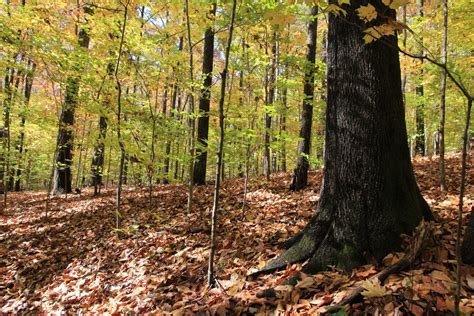Introduction
Madison Bell Tress is a groundbreaking concept that combines modern technology with the beauty of nature. These innovative structures offer a multitude of benefits from enhancing urban spaces to mitigating climate change. In this comprehensive guide, we will explore the remarkable impact of Madison Bell Tress and uncover their limitless potential.

Key Features and Benefits
Madison Bell Tress possess unique features that set them apart from traditional vegetation:
- Vertical Gardens: These structures create vertical gardens that maximize space utilization, transforming urban environments into lush green landscapes.
- Air Purification: The plants in Madison Bell Tress effectively filter the air, removing pollutants and improving air quality.
- Temperature Regulation: The dense vegetation provides natural cooling, reducing ambient temperatures and creating a more comfortable environment.
- Biodiversity: Madison Bell Tress support a wide range of plant species, fostering biodiversity and providing habitats for insects and wildlife.
Applications and Impact
The applications of Madison Bell Tress are vast and transformative:
- Urban Greening: They revitalize urban areas by adding greenery to rooftops, walls, and other vertical surfaces.
- Indoor Environments: They improve air quality and create a more inviting atmosphere in indoor spaces such as offices, schools, and hospitals.
- Climate Mitigation: By absorbing carbon dioxide, Madison Bell Tress contribute to mitigating climate change and creating a more sustainable future.
- Aesthetic Value: They enhance the visual appeal of buildings and public spaces, promoting aesthetic enrichment and psychological well-being.
Supporting Statistics
According to various studies and organizations:
- The World Health Organization (WHO) estimates that air pollution causes over 4 million premature deaths annually.
- The United Nations Environment Programme (UNEP) reports that vertical gardens can reduce indoor air pollution by up to 90%.
- The Arbor Day Foundation states that trees can cool urban areas by up to 10 degrees Fahrenheit.
The Future of Greenery
Madison Bell Tress represent the future of greenery in urban environments. As technology continues to advance, these structures will become even more sophisticated and versatile.
- Smart Tress: Madison Bell Tress can be equipped with sensors and automated systems to monitor and optimize plant growth and environmental conditions.
- Living Walls: These structures will evolve into living walls, providing a seamless integration between architecture and nature.
- Bio-Materials: Madison Bell Tress will incorporate sustainable and innovative materials such as bio-plastics and recycled fibers.
Conclusion
Madison Bell Tress are a powerful tool for transforming our urban environments and creating a more sustainable and livable future. By embracing this innovative approach to greenery, we can reap the numerous benefits it offers for air quality, temperature regulation, biodiversity, and aesthetic value. As we continue to explore the potential of Madison Bell Tress, let us unlock the limitless possibilities they hold for shaping the future of our cities and the well-being of our planet.
FAQs
-
How much do Madison Bell Tress cost? Costs vary depending on the size and complexity of the structure. Contact your local Madison Bell Tress provider for a detailed estimate.
-
Do Madison Bell Tress require maintenance? Yes, they require regular watering, pruning, and occasional fertilization. However, the maintenance requirements are minimal compared to traditional landscaping.
-
What types of plants can be used in Madison Bell Tress? A wide variety of plants can be used, including ferns, succulents, vines, and flowering plants. Select plants based on the desired aesthetic effect and environmental conditions.
-
Can Madison Bell Tress be used in both indoor and outdoor environments? Yes, they can be installed in both indoor and outdoor spaces. However, the choice of plants and materials may differ depending on the environment.
-
How do Madison Bell Tress benefit people? They improve air quality, reduce stress, enhance privacy, and provide a sense of connection with nature.
-
What is the life expectancy of Madison Bell Tress? With proper maintenance, Madison Bell Tress can last for over 10 years.
Tables
Table 1: Benefits of Madison Bell Tress
| Benefit | Impact |
|---|---|
| Air Purification | Reduce indoor air pollution by up to 90% |
| Temperature Regulation | Cool urban areas by up to 10 degrees Fahrenheit |
| Biodiversity | Support a wide range of plant species and provide habitats |
| Aesthetic Value | Enhance visual appeal and promote well-being |
Table 2: Applications of Madison Bell Tress
| Application | Example |
|---|---|
| Urban Greening | Rooftops, walls, public spaces |
| Indoor Environments | Offices, schools, hospitals |
| Climate Mitigation | Carbon dioxide absorption |
| Healthcare | Healing gardens, stress reduction |
Table 3: Costs and Maintenance
| Factor | Information |
|---|---|
| Cost | Varies depending on size and complexity |
| Maintenance | Minimal, including watering, pruning, and fertilization |
| Water Consumption | Dependent on plant species and environmental conditions |
Table 4: Types of Plants for Madison Bell Tress
| Plant Type | Characteristics |
|---|---|
| Ferns | Low maintenance, shade-tolerant |
| Succulents | Drought-tolerant, high aesthetic value |
| Vines | Trailing or climbing plants, provide coverage |
| Flowering Plants | Add color and fragrance, attract pollinators |
